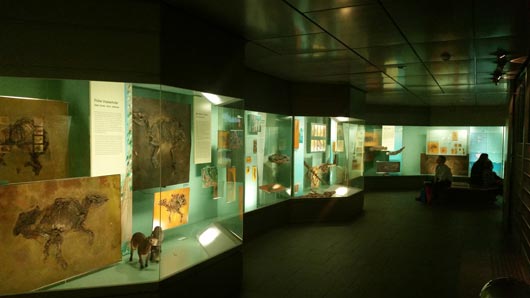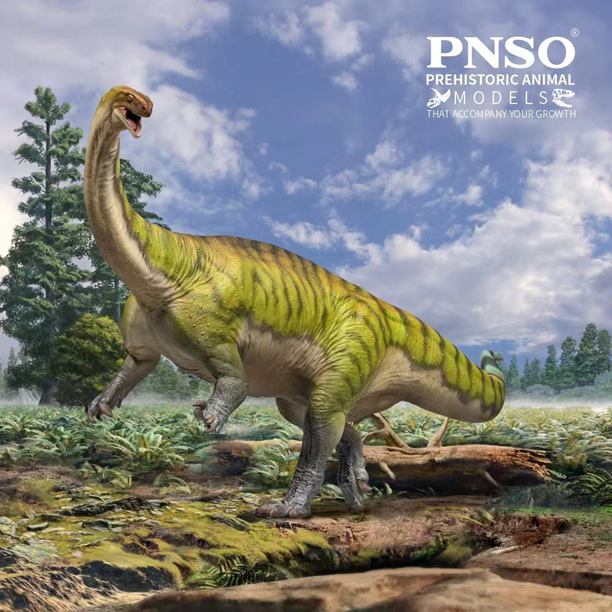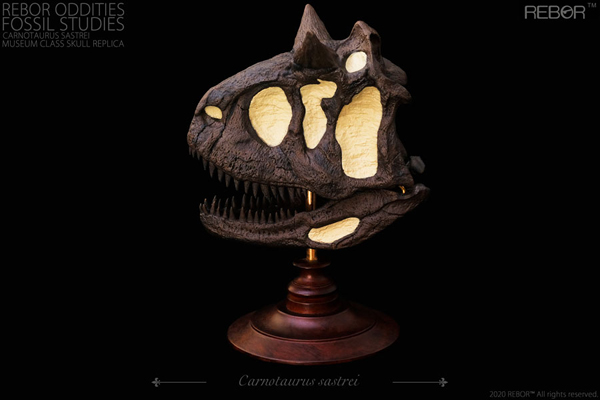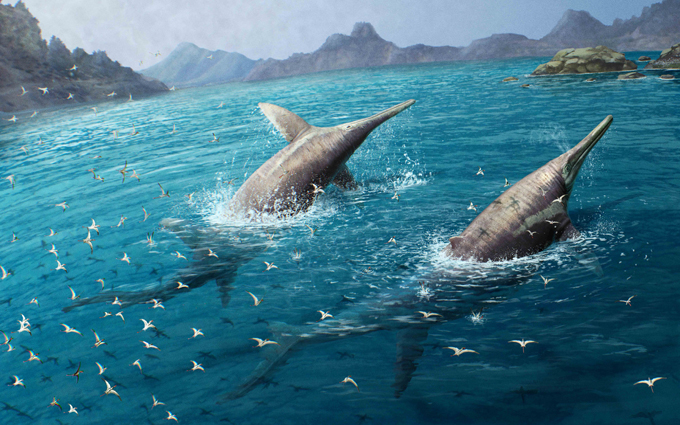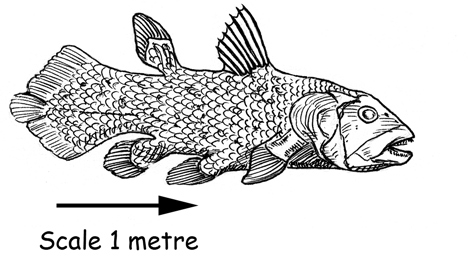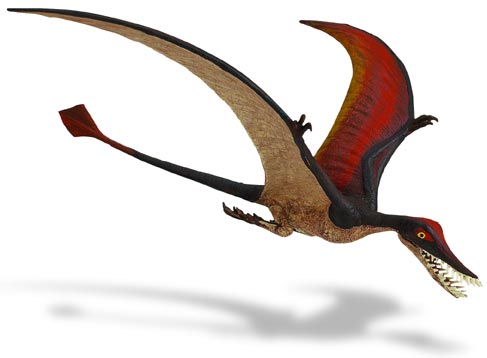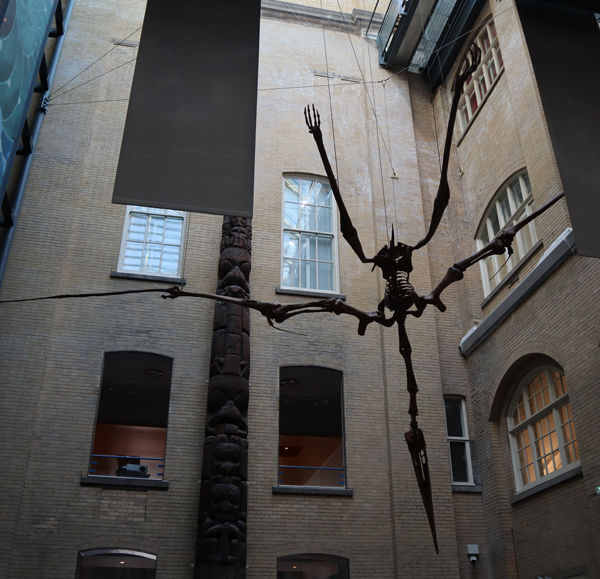Fossils found on the shoreline of Lake Kariba in northwestern Zimbabwe represent a completely new species of dinosaur. This new dinosaur, a sauropodomorph, has been named Musankwa sanyatiensis. It is only the fourth dinosaur species named from Zimbabwe. The study involved the Natural History Museum of Zimbabwe, Stony Brook University (New York) and the University of the Witwatersrand (South Africa). The research was led by Professor Paul Barrett of the London Natural History Museum.

Artist reconstruction of Musankwa sanyatiensis, walking in Triassic shallow waters past a temnospondyl (metoposaur). Picture credit: Atashni Moopen.
A New Late Triassic Sauropodmorph Dinosaur
The discovery of Musankwa sanyatiensis is extremely significant. It is the first dinosaur to be named from the Mid-Zambezi Basin in more than fifty years. In addition, Musankwa will help to inform palaeontologists about the evolution of Late Triassic sauropodomorphs.
The four dinosaurs to be named and described from fossils found in Zimbabwe are:
- Megapnosaurus rhodesiensis (a coelophysoid, formerly known as Syntarsus and named in 1969).
- Vulcanodon karibaensis (a primitive, Early Jurassic sauropod named in 1972).
- Mbiresaurus raathi (a basal, Late Triassic sauropodomorph named in 2022).
- Musankwa sanyatiensis (a basal sauropodomorph named in 2024).
M. sanyatiensis is known from hind leg bones which represent a single, individual animal. The right femur, tibia and astragalus were distinct from all other Late Triassic massopodan sauropodomorphs, so the researchers were confident that this was a new species.
One of the co-authors of the paper, Assistant Professor Kimberley Chapelle (Stony Brook University) commented:
“Despite the limited fossil material, these bones possess unique features that distinguish them from those of other dinosaurs living at the same time.”

Musankwa sanyatiensis fossil site location map. The geographic setting of the Mid-Zambezi Basin and Spurwing Island in northwest Zimbabwe. Picture credit: Lara Sciscio.
Musankwa sanyatiensis Named After a Houseboat
This new dinosaur was named after the houseboat “Musankwa”. The vessel was used by the research team for accommodation and as a makeshift laboratory. It was supplied by David and Julie Glynn. The crew Godfrey Swalika, Simbarashe Mangoroma, Never Mapira and Coster Katupu provided essential logistical support to the field team.

The houseboat “Musankwa”, the vessel that functioned as the home and mobile laboratory during two field expeditions to Lake Kariba in 2017–2018, which was made available through the generosity of David and Julie Glynn, and whose crew, Coster Katupu, Godfrey Swalika, Simbarashe Mangoroma, and Never Mapira, provided essential logistic support. Picture credit: Jonah Choiniere.
Phylogenetic analysis places Musankwa sanyatiensis as the earliest branching member of the Massopoda lineage of sauropodomorphs. It is thought to have been bipedal and weighed around 390 kilograms. Although no giant, Musankwa was one of the biggest dinosaurs known from the Late Triassic of southern Africa.
African Dinosaurs
Africa has a long history of dinosaur fossil discovery. The first dinosaur from the Southern Hemisphere was found in South Africa just three years after Sir Richard Owen coined the term “Dinosauria”. Remarkably, most dinosaur fossils from the continent have been found in just ten countries. Most of these are from north Africa, from countries like Morocco and Egypt. The dinosaurs of southern Africa are poorly known in comparison.
Professor Paul Barrett explained:
“Put simply, there have been fewer people looking for and unearthing dinosaurs in comparison with other regions of the world.”

The international research team composed of scientists from Zimbabwe, South Africa and the UK at the Musankwa sanyatiensis fossil locality on Spurwing Island, Lake Kariba, Zimbabwe. Picture credit: Lara Sciscio.
To read an article about the discovery of a giant sauropod from Angola: A New Giant Sauropod – Angolatitan.
Although there have been only a few dinosaurs named and described from southern Africa, those that have been found are historically and scientifically significant. Some of the geologically oldest dinosaurs have been described, such as Nyasasaurus parringtoni from Tanzania and Mbiresaurus raathi from Zimbabwe.
An article from 2012 outlining the significance of Nyasasaurus parringtoni to dinosaur research: Putting Back the Date of the First Dinosaurs to Evolve.
The research team commented that the Late Triassic-Early Jurassic sediments of Zimbabwe are crucial for understanding the End-Triassic extinction. This was a catastrophic event that dramatically reshaped Earth’s biodiversity around 200 million years ago. The geology provides insights into how different fossil-bearing sediments around the world correspond in age and help in piecing together the global picture of ancient life.

Musankwa sanyatiensis leg bones as they were discovered in the ground on Spurwing Island, Lake Kariba, Zimbabwe. Picture credit: Paul Barrett.
Musankwa sanyatiensis Highlighting the Untapped Potential of Southern Africa
The formal description of Musankwa sanyatiensis highlights the latent potential of southern Africa. It is likely that many more significant fossil discoveries will be made.
Professor Paul Barrett commented:
“Over the last six years, many new fossil sites have been recorded in Zimbabwe, yielding a diverse array of prehistoric animals, including the first sub-Saharan mainland African phytosaurs [ancient crocodile-like reptiles], metoposaurid amphibians [giant armoured amphibians], lungfish, and other reptile remains.”
As more parts of southern Africa are explored for prehistoric animal fossils, there is hope that more important discoveries will be made. These fossils will shed light on dinosaur evolution and the ecosystems they inhabited.
Dr Kimberley Chapelle added:
“Based on where it sits on the dinosaur family tree, Musankwa sanyatiensis is the first dinosaur of its kind from Zimbabwe. It, therefore, highlights the potential of the region for further palaeontological discoveries.”

Musankwa sanyatiensis fossil bones in situ, after mechanical preparation, and after CT scanning. Artist reconstruction of Musankwa sanyatiensis showing position of fossil bones. Picture credit: Barrett et al. 2024, Atashni Moopen.
Everything Dinosaur acknowledges the assistance of a media release by the University of the Witwatersrand in the compilation of this article.
The scientific paper: “A new Late Triassic sauropodomorph dinosaur from the Mid-Zambezi Basin, Zimbabwe” by Barrett, P.M., Chapelle, K.E.J., Sciscio, L., Broderick, T.J., Zondo, M., Munyikwa, D., and Choiniere, J.N. Published in Acta Palaeontologica Polonica.
Visit the award-winning Everything Dinosaur website: Dinosaur and Prehistoric Animal Toys.





